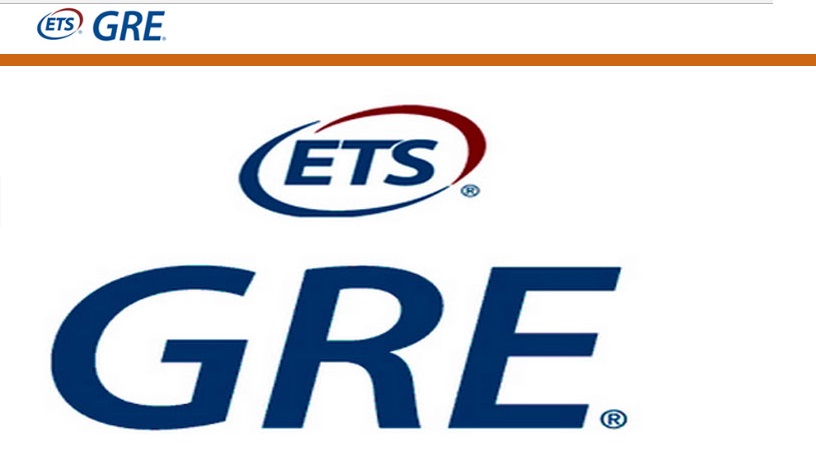
یکی از آزمون های بین المللی شناخته شده که با استقبال گسترده دانشجویان و علاقمندان به تحصیل در دانشگاه ها و موسسات آموزش عالی معتبر خارج از کشور همراه شده است، GRE بوده که بیشتر مورد تقاضای دانشگاه های آمریکای شمالی بوده و برای پذیرش در مقطع دکترا، از متقاضی خواسته می شود تا مدرک شرکت در آزمون و کسب نمره حداقلی را ارائه کند.
بیش از ۳۵۲ هزار صفحه ایندکس شده درباره کلید واژه GRE Subject در گوگل نشان می دهد که تا چه اندازه این آزمون، منابع و اطلاعات مربوطه، در صدها هزار درگاه بارگذاری و مورد ارجاع هزاران متقاضی آن قرار گرفته است.
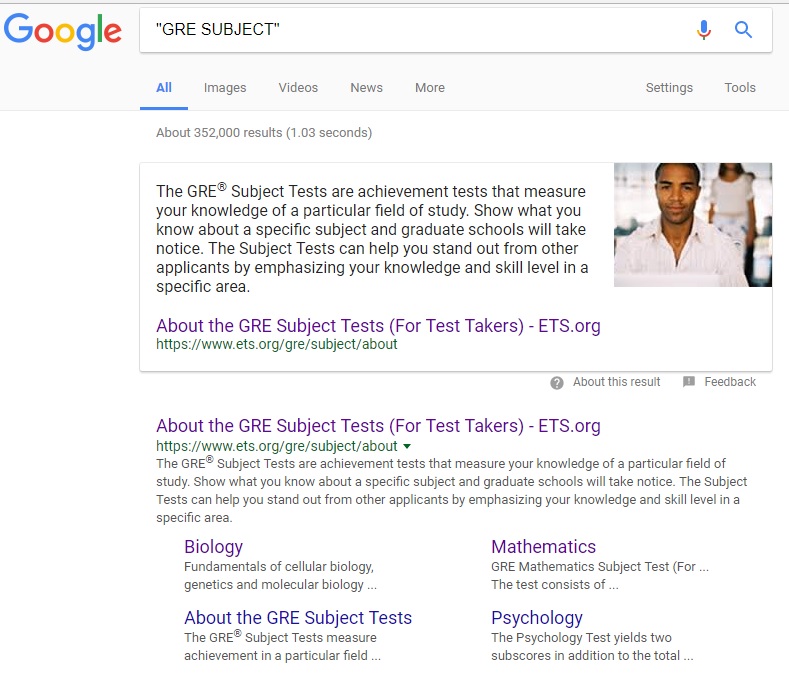
آزمون GRE در دو بخش عمومی (General) و موضوعی (subject) برگزار می شود و مراکز آزمون (Test centers) در سراسر جهان، نسبت به برگزاری این امتحان در ۱۲ ماه سال اقدام می کنند. در ایران، سازمان سنجش و آموزش کشور، برگزار کننده رسمی آزمون جی آر ایی عمومی بوده و سالانه هزاران متقاضی ایرانی برای ارسال مدارک به دانشگاه های آمریکای شمالی، در آزمون شرکت می کنند.
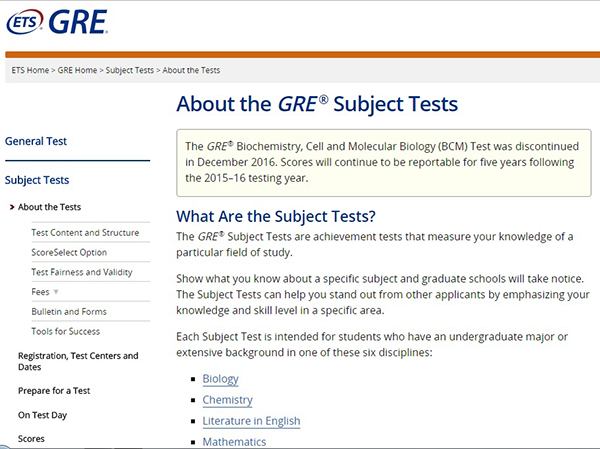
اگرچه آزمون جی آر ایی به نسبت آزمون های زبان انگلیسی آیلتس و تافل، تخصصی تر و کمی دشوار تر است، اما برخی از دانشگاه های دنیا، حد نصاب نمره برای متقاضیان (applicants) در نظر نمی گیرند و گواهی شرکت در آزمون را به عنوان یکی از نیازمندی های پذیرش (admission requirements) مطرح می کنند. اما باید توجه داشت که هر اندازه نمره بیشتری داشته باشید، در فرآیند رقابتی ادمیشن، شانس شما افزایش خواهد یافت.
در گفتار امروز، شما را با آزمون جی آر ایی موضوعی آشنا می کنیم.
با ما همراه باشید.
درباره آزمون GRE موضوعی
این آزمون، همانطور که گفته شد، بیشتر برای متقاضیان تحصیل در مقطع کارشناسی ارشد و به ویژه دکترا در دانشگاه ها و موسسات آموزش عالی آمریکای شمالی (کانادا و ایالات متحده) کاربرد داشته و برای تحصیل در دانشگاه های اقیانوسیه، آسیا و اروپا، معمولا چنین مدرکی از دانشجو درخواست نمی شود.

یکی از فاکتورهایی که امتیاز رقابتی برای متقاضیان در فرآیند تحصیل و اپلای در خارج از کشور محسوب می شود، در اختیار داشتن مدرک جی آر ایی با حد نصاب نمره متوسط به بالا است. چرا که گرفتن نمره متوسط به بالا، نیازمند دانش عمومی زبان انگلیسی و تسلط نسبی به مقولات ریاضی، مقاله نویسی تحلیل و عمومی بوده و داوطلب می بایست، مهارت های لازم را برای شرکت در آزمون و کسب نمره خوب، بدست آورد.

بنابراین، حتی اگر یک شهروند کشورهای انگلیسی زبان نیز بدون آمادگی و افزایش مهارت های خود، در آزمون شرکت کند، شاید قادر به پاسخ گویی اکثر پرسش ها نبوده و نتواند حتی نمره متوسط را کسب کند. لذا به داوطلبان توصیه می شود که هم سطح زبان عمومی خود را برای شرکت در آزمون تقویت کنند، هم مهارت های تخصصی لازم برای شرکت در آزمون جی آر ایی عمومی و موضوعی را تحت نظر کارشناسان آموزش GRE بدست آورند.
البته منابع بسیاری برای آمادگی شرکت در آزمون جی آر ایی وجود دارد که در این گفتار نیز به شماری اشاره می کنیم. همانطور که می دانید، GRE SUBJECT را برخی از دانشگاه ها، از متقاضیان اپلای برای مقطع PhD درخواست می کنند و متقاضی می بایست کارنامه خود را از ETS درخواست کرده تا به همراه دیگر مدارک، به بخش ادمیشن دانشگاه مقصد ارسال شود.
جی آر ایی موضوعی بر خلاف جی آر ایی عمومی، دانش شما را در حوزه خاص علمی مورد بررسی و ارزیابی قرار می دهد و به همین خاطر، به نسبت جی آر ایی عمومی، درجه بالاتری داشته و تقویت کننده وزن علمی رزومه حرفه ای شما خواهد بود. جی آر ایی موضوع در ۶ حوزه زیر برگزار می شود که عبارتند از:
- فیلد زیست شناسی
- فیلد شیمی
- فیلد ادبیات زبان انگلیسی
- فیلد ریاضیات
- فیلد فیزیک
- فیلد روانشناسی
اگر از شما درخواست شد که جی آر ایی موضوعی در یکی از ردیف های شش گانه فوق الذکر را بدست آورید، به لینک های مربوطه رجوع کنید. این ۶ لینک، شما را به درگاه ETS وصل می کند که رسمی ترین اطلاعات درباره برگزاری آزمون در اختیار شما قرار می گیرد.
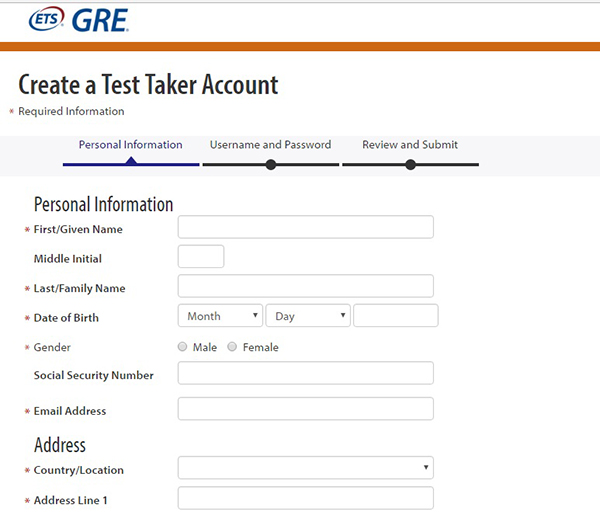
توجه داشته باشید که از آوریل ۲۰۱۳ میلادی، آزمون Computer Science دیگر برگزار نمی شود. همچنین از دسامبر ۲۰۱۶ میلادی، آزمون بیوشیمی، بیولوژی سلولی و بیولوژی ملکولی (BCM) برگزار نمی شود.
مباحث بخش جی آر ایی ادبیات زبان انگلیسی
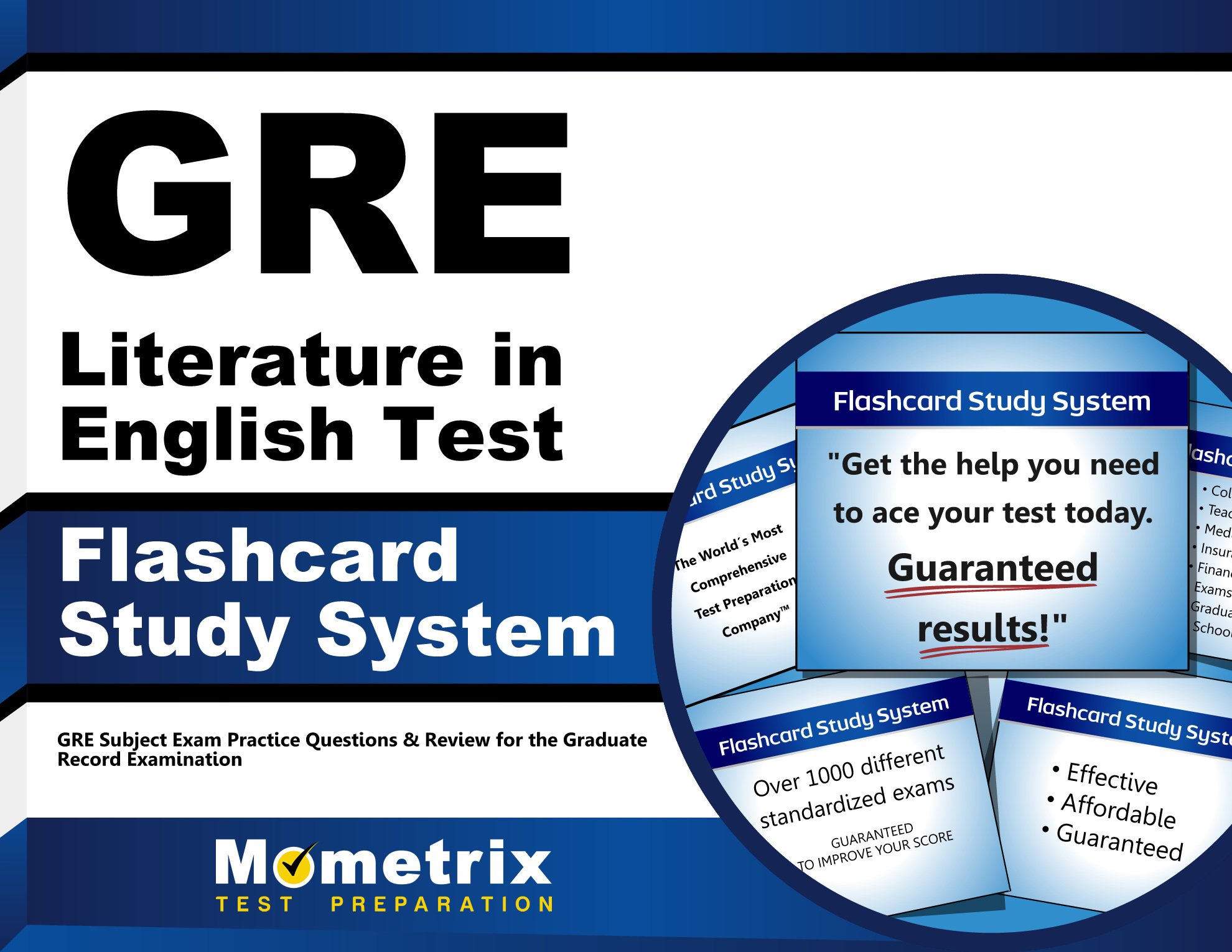
افرادی که قصد دارند در مقطع دکترای گرایش های زبان انگلیسی در دانشگاه های آمریکای شمالی مشغول به تحصیل شوند، معمولا از ان ها خواسته می شود که GRE Subject in English Literature ارائه کنند. مباحثی که در این آزمون سوال می شود به شرح زیر است:
Content Specifications
The approximate distribution of questions according to content categories is indicated by the following outline
(Literary Analysis (40–۵۵%
Interpretation of passages of prose and poetry. Such questions may involve recognition of conventions and genres, allusions and references, meaning and tone, grammatical structures and rhetorical strategies, and literary techniques.
(Identification (15–۲۰%
Recognition of date, author or work by style and/or content (for literary theory identifications see IV below).
(Cultural and Historical Contexts (20–۲۵%
Knowledge of literary, cultural and intellectual history as well as identification of author or work through a critical statement or biographical information. Also identification of details of character, plot or setting of a work.
(History and Theory of Literary Criticism (10–۱۵%
Identification and analysis of the characteristics and methods of various critical and theoretical approaches.
The literary-historical scope of the test follows the distribution below
| ۱. Continental, Classical and Comparative Literature through 1925 | ۵–۱۰% |
| ۲. British Literature to 1660 (including Milton) | ۲۵–۳۰% |
| ۳. British Literature 1660–۱۹۲۵ | ۲۵–۳۵% |
| ۴. American Literature through 1925 | ۱۵–۲۵% |
| ۵. American, British and World Literatures after 1925 | ۲۰–۳۰% |
نکته مهم برای شرکت در آزمون جی آر ایی ادبیات زبان انگلیسی
توجه کنید که ETS برای کسانی که قصد دارند در آزمون جی آر ایی ادبیات زبان انگلیسی شرکت کنند، توضیحاتی ارائه کرده است که در زیر مشاهده می کنید:
Because examinees tend to remember most vividly questions that proved troublesome, they may feel that the test has included or emphasized those areas in which they are least prepared. Students taking the GRE® Literature in English Test should remember that in a test of this many questions, much of the material presents no undue difficulty
The very length and scope of the examination eventually work to the benefit of students and give them an opportunity to demonstrate what they do know
No one is expected to answer all the questions correctly; in fact, it is possible to achieve the maximum score without answering all the questions correctly
برای آمادگی در آزمون جی آر ایی ادبیات زبان انگلیسی و آشنایی با پرسش ها، از راهنمای رسمی ETS که در این PDF ارائه شده است استفاده کنید تا به مفاهیم و نحوه طرح سوالات و شیوه دقیق پاسخ به آن ها آشنا شوید.
مباحث بخش جی آر ایی روانشناسی
برای آگاهی از مفاهیم و موضوعاتی که در بخش جی آر ایی روانشناسی مطرح می شود، فهرست زیر را در نظر داشته باشید:
Content Specifications
I. EXPERIMENTAL SUBSCORE — ۴۰%
- Learning (3–۵%)
- Classical Conditioning
- Instrumental Conditioning
- Observational Learning, Modeling
- Theories, Applications and Issues
- Language (3–۴%)
- Units (phonemes, morphemes, phrases)
- Syntax
- Meaning
- Speech Perception and Processing
- Reading Processes
- Verbal and Nonverbal Communication
- Bilingualism
- Theories, Applications and Issues
- Memory (7–۹%)
- Working Memory
- Long-term Memory
- Types of Memory
- Memory Systems and Processes
- Theories, Applications and Issues
- Thinking (4–۶%)
- Representation (Categorization, Imagery, Schemas, Scripts)
- Problem Solving
- Judgment and Decision-making Processes
- Planning, Metacognition
- Intelligence
- Theories, Applications and Issues
- Sensation and Perception (5–۷%)
- Psychophysics, Signal Detection
- Attention
- Perceptual Organization
- Vision
- Audition
- Gustation
- Olfaction
- Somatosenses
- Vestibular and Kinesthetic Senses
- Theories, Applications and Issues
- Physiological/Behavioral Neuroscience (12–۱۴%)
- Neurons
- Sensory Structures and Processes
- Motor Structures and Functions
- Central Structures and Processes
- Motivation, Arousal, Emotion
- Cognitive Neuroscience
- Neuromodulators and Drugs
- Hormonal Factors
- Comparative and Ethology
- States of Consciousness
- Theories, Applications and Issues
II. SOCIAL SUBSCORE — ۴۳%
- Clinical and Abnormal (12–۱۴%)
- Stress, Conflict, Coping
- Diagnostic Systems
- Assessment
- Causes and Development of Disorders
- Neurophysiological Factors
- Treatment of Disorders
- Epidemiology
- Prevention
- Health Psychology
- Culture and Gender Issues
- Theories, Applications and Issues
- Lifespan Development (Childhood, Adolescence, Aging) (12–۱۴%)
- Nature-Nurture
- Physical and Motor
- Perception and Cognition
- Language
- Intelligence
- Social and Personality
- Emotion
- Socialization, Family and Cultural Influences
- Theories, Applications and Issues
- Personality (3–۵%)
- Theories
- Structure
- Assessment
- Personality and Behavior
- Applications and Issues
- Social (12–۱۴%)
- Social Perception, Cognition, Attribution, Beliefs
- Attitudes and Behavior
- Social Comparison, Self
- Emotion, Affect and Motivation
- Conformity, Influence and Persuasion
- Interpersonal Attraction and Close Relationships
- Group and Intergroup Processes
- Cultural and Gender Influences
- Evolutionary Psychology, Altruism and Aggression
- Theories, Applications and Issues
III. OTHER AREAS — ۱۷%
- General (4–۶%)
- History
- Industrial-Organizational
- Educational
- Measurement and Methodology (11–۱۳%)
- Psychometrics, Test Construction, Reliability, Validity
- Research Designs
- Statistical Procedures
- Scientific Method and the Evaluation of Evidence
- Ethics and Legal Issues
- Analysis and Interpretation of Findings
برای آشنایی با مباحث و سوالاتی که در آزمون جی آر ایی روانشناسی مطرح می شود، از منبع رسمی ETS که فایل PDF آن قابل دانلود است استفاده کنید تا با ده ها موضوع فوق الذکر در فرآیند و محیط آزمون آشنا شوید.
نکته مهم برای شرکت در آزمون جی آر ایی روانشناسی
The Psychology Test yields two subscores in addition to the total score. Although the test offers only two subscores, there are questions in three content categories
Experimental or natural science oriented (about 40 percent of the questions), including learning, language, memory, thinking, sensation and perception, and physiological psychology/behavioral neuroscience. They contribute to the experimental psychology subscore and the total score
Social or social science oriented (about 43 percent of the questions). These questions are distributed among the fields of clinical and abnormal psychology, lifespan development, personality and social psychology. They contribute to the social psychology subscore and the total score
General (about 17 percent of the questions), including the history of psychology, applied psychology, psychometrics, research design and statistics. They contribute to the total score only
مباحث بخش جی آر ایی فیزیک
اگر قصد دارید در مقطع دکترا گرایش های فیزیک در دانشگاه های آمریکای شمالی تحصیلی کنید، معمولا باید GRE SUBJECT در بخش فیزیک را در اختیار داشته باشید. مواردی که در این آزمون سوال می شود به شرح زیر است:
۱) بیست درصد سوالات آزمون جی آر ایی فیزیک مربوط به پرسش های مکانیک کلاسیک است که موضوعاتی از جمله سینماتیک، قانون نیوتن، کار و انرژی، دینامیک سیستم های ذره، نیروهای مرکزی و دینامیک سه بعدی و موضوعاتی در حوزه مکانیک سیالات را شامل می شود
CLASSICAL MECHANICS — ۲۰%
(such as kinematics, Newton’s laws, work and energy, oscillatory motion, rotational motion about a fixed axis, dynamics of systems of particles, central forces and celestial mechanics, three-dimensional particle dynamics, Lagrangian and Hamiltonian formalism, noninertial reference frames, elementary topics in fluid dynamics)
۲) ۱۸ درصد پرسش های آزمون جی آر ایی فیزیک را الکترومغناطیس تشکیل می دهد که سوالات مدارهای دی سی و فیلدهای مغناطیسی در فضای آزاد و معادلات ماکسول و کاربرد آن و بررسی امواج الکترومغنایس را شامل می شود.
ELECTROMAGNETISM — ۱۸%
(such as electrostatics, currents and DC circuits, magnetic fields in free space, Lorentz force, induction, Maxwell’s equations and their applications, electromagnetic waves, AC circuits, magnetic and electric fields in matter)
۳) ۹ درصد کل پرسش های آزمون جی آر ایی فیزیک را اپتیک و امواج تشکیل می دهد که مقولاتی از جمله قابلیت های امواج، تداخلات، پولاریزاسیون و اپتیک را شامل می شود.
OPTICS AND WAVE PHENOMENA — ۹%
(such as wave properties, superposition, interference, diffraction, geometrical optics, polarization, Doppler effect)
۴) ۱۰ درصد کل پرسش های آزمون جی آر ایی فیزیک را ترمودینامیک و مکانیک آماری تشکیل می دهد که مقولاتی در حوزه قوانین ترمودینامیک، فرآیند های ترمودینامیکی، قوانین گازها، تئوری جنبشی، مفاهیم آماری و محاسبات ترمودنیامکی از ان جمله است.
THERMODYNAMICS AND STATISTICAL MECHANICS — ۱۰%
(such as the laws of thermodynamics, thermodynamic processes, equations of state, ideal gases, kinetic theory, ensembles, statistical concepts and calculation of thermodynamic quantities, thermal expansion and heat transfer)
۵) ۱۲ درصد کل پرسش های آزمون جی آر ایی فیزیک را مکانیک کوانتوم تشکیل می دهد که مقولاتی شامل: مفاهیم بنیادی مکانیک کوانتوم، راه حل های معادله شرودینگر، امواج وامثالهم است.
QUANTUM MECHANICS — ۱۲%
(such as fundamental concepts, solutions of the Schrödinger equation (including square wells, harmonic oscillators, and hydrogenic atoms), spin, angular momentum, wave function symmetry, elementary perturbation theory)
۶) ۱۰ درصد کل پرسش های آزمون جی آر ایی فیزیک را فیزیک اتمی تشکیل می دهد که موضوعاتی از جمله: شناخت الکترون ها، قوانین حاکم بر آنها، ساختار اتمی، قوانین سلکشن، اشعه ایکس، اتم ها در الکتریک و فیلدهای مغناطیسی را در بر می گیرد.
ATOMIC PHYSICS — ۱۰%
(such as properties of electrons, Bohr model, energy quantization, atomic structure, atomic spectra, selection rules, black-body radiation, x-rays, atoms in electric and magnetic fields)
۷)۶ درصد کل پرسش های آزمون جی آر ایی فیزیک را نسبیت خاص تشکیل می دهد که در زیر معرفی شده است.
SPECIAL RELATIVITY — ۶%
(such as introductory concepts, time dilation, length contraction, simultaneity, energy and momentum, four-vectors and Lorentz transformation, velocity addition)
۸)۶ درصد کل پرسش های آزمون جی آر ایی فیزیک را متدهای آزمایشگاهی تشکیل می دهد که مقولاتی از جمله: تحلیل و بررسی داده و اندازه گیری خطاها، شناخت ابزارهای اندازه گیری، آمار و احتمالات، لیزر و اپتیک و کاربردهای بنیادین آمار و احتمالات در علم فیزیک را شامل می شود.
LABORATORY METHODS — ۶%
(such as data and error analysis, electronics, instrumentation, radiation detection, counting statistics, interaction of charged particles with matter, lasers and optical interferometers, dimensional analysis, fundamental applications of probability and statistics)
۹) ۹ درصد کل پرسش های آزمون جی آر ایی فیزیک را اپتیک خاص یا اپتیک تخصصی تشکیل می دهد که فیزیک ذرات و فیزیک اتمی از ان جمله است.
SPECIALIZED TOPICS — ۹%
Nuclear and Particle physics (e.g., nuclear properties, radioactive decay, fission and fusion, reactions, fundamental properties of elementary particles), Condensed Matter (e.g., crystal structure, x-ray diffraction, thermal properties, electron theory of metals, semiconductors, superconductors), Miscellaneous (e.g., astrophysics, mathematical methods, computer applications)
اگر قصد دارید با نمونه پرسش های موارد ۹ گانه فوق الذکر آشنا شوید، راهنمای رسمی ETS در این زمینه را در فایل PDF دانلود کنید که راهنمای خوبی برای علاقمندان به شرکت در آزمون جی آر ایی فیزیک است.
مباحث آزمونی جی آر ایی ریاضیات
۵۰ درصد سوالات از مباحث ریاضی ۱ و ۲ (شامل حد، انتگرال و مشتق یک و چند متغیره، مثلثات، معادلات دیفرانسیل …) ۲۵ درصد مباحث جبر (جبر خطی، ماتریس ها، تبدیل خطی، فضاهای برداری، مقادیر و بردارهای ویژه، تئوری اعداد، مباحث حلقه، گروه ) و ۲۵ درصد دیگر، مباحث دیگر (تصاعدها و سری ها، پیوستگی و مشتق پذیری، توپولوژی، گراف، الگوریتم، ترتیب و ترکیب، آمار و احتمال، هندسه، حساب همنهشتی، متغیرهای موهومی) خواهد بود.
مواردی که در بخش جبر سوال می شود، به شرح زیر است:
Elementary algebra: basic algebraic techniques and manipulations acquired in high school and used throughout mathematics
Linear algebra: matrix algebra, systems of linear equations, vector spaces, linear transformations, characteristic polynomials, and eigenvalues and eigenvectors
Abstract algebra and number theory: elementary topics from group theory, theory of rings and modules, field theory, and number theory
موضوعاتی که در بخش موارد دیگر (ADDITIONAL TOPICS) مطرح می شود عبارتند از:
Introductory real analysis: sequences and series of numbers and functions, continuity, differentiability and integrability, and elementary topology of R and Rn
Discrete mathematics: logic, set theory, combinatorics, graph theory, and algorithms
Other topics: general topology, geometry, complex variables, probability and statistics, and numerical analysis
موضوعاتی که در بخش CALCULUS سوال می شود عبارتند از:
Material learned in the usual sequence of elementary calculus courses — differential and integral calculus of one and of several variables — including calculus-based applications and connections with coordinate geometry, trigonometry, differential equations and other branches of mathematics.
نکته مهم در بخش جی آر ایی ریاضیات
The above descriptions of topics covered in the test should not be considered exhaustive; it is necessary to understand many other related concepts. Prospective test takers should be aware that questions requiring no more than a good precalculus background may be quite challenging; such questions can be among the most difficult questions on the test. In general, the questions are intended not only to test recall of information but also to assess the understanding of fundamental concepts and the ability to apply those concepts in various situations.
سوالات مربوط به برخی از مباحث فوق، مربوط به اصول و بخش های ابتدایی مبحث است، با مرور کتاب Cracking و سوال های آزمون های گذشته، بهتر متوجه این موضوع خواهید شد. مرور کتاب های ریاضی ۱ و ریاضی ۲ عمومی در سال اول تحصیل در دانشگاه های ایران، می تواند شما را برای آمادگی شرکت در این بخش، یاری دهد. برای آمادگی در آزمون جی آر ایی ریاضیات می توانید منبع رسمی ETS را در این لینک دانلود کنید.
ساختار آزمون:
۶۶ سوال ۵ گزینه ای با نمره منفی (۰.۲۵-)
مدت زمان آزمون:
۱۷۰ دقیقه
هزینه ثبت نام:
۱۵۰ دلار آمریکا که هر ساله تغییر می کند. ( در صورت ثبت نام از طریق سایت سازمان سنجش، می توانید معادل ریالی این هزینه را از طریق کارت های بانکی عضو شبکه شتاب پرداخت نمایید.)
منابع آزمون:
مهم ترین و معروف ترین منبع، کتاب زیر است که ویرایش سوم آن روی وب در دسترس قرار دارد و ویرایش چهارم آن نیز منتشر شده است:
۱ . Cracking the GRE Math Subject Test از سری کتاب های The Princeton Review
و کتاب زیر که حاوی شش نمونه امتحان است:
۲ . GRE Mathematics (GRE Test Preparation) by O. P. Agrawal
همچنین کتاب زیر:
۳ . All the Mathematics You Missed by Thomas A. Garrity
در مورد هر مبحث، کتاب های زیر برای داوطلبانی که رشته تحصیلی آنها، ریاضی نبوده است، پیشنهاد می شود:
- گراف: هر کتابی که مباحث اولیه را مرور می کند. مانند: گراف و کاربردهای آن، ایستین ار، مرکز نشر دانشگاهی یا نظریه گراف و کاربردهای آن، دکتر حسین دوستی، مبتکران
- ریاضی ۱ و ۲: مسعود آقاسی، نگاه دانش، گروه ها: گروه و گراف آن، ایزرایل گروسن، مرکز نشر دانشگاهی
- مقدمه ای بر نظریه گروه ها و حلقه ها، دکتر حبیب شریف، دانشگاه شیراز
- توپولوژی: نخستین مفاهیم توپولوژی، ویلیام چین، مرکز نشر دانشگاهی
- توپولوژی جبری مقدماتی، دکتر مهدی نجفی خواه، ساحل اندیشه تهران
- آمار و احتمال: هر کتاب آمار و احتمال مقدماتی که مباحث ترتیب و ترکیب و توزیع نرمال را پوشش می دهد.
- معادلات دیفرانسیل: هرکتاب درسی که سرفصل های درس معادلات دیفرانسیل مقطع لیسانس رشته های مهندسی را پوشش می دهد.
- معادلات دیفرانسیل و کاربردهای آن، پورکاظمی، نشر نی
- جبر خطی: جزوه Leaner Algebra تهیه شده توسط Jim Hefferon کتابی حجیم اما مفید برای افرادی که فرصت کافی برای مطالعه دارند.
مباحث آزمون جی آر ایی بیولوژی
امتحان GRE subject بیولوژی برای ارزیابی توانایی ها و پیش زمینه دانشجو در موارد زیر طراحی شده است:
- دانش فرد در زمینه تعاریف و مفاهیم پایه
- درک مفهومی ایده ها، روابط و فرآیندها
- درک تحقیقات علمی پایه، روش ها و ابزارها
- توانایی خواندن، ارزیابی کردن و استنتاج از مطالعات محیطی و آزمایشگاهی ناآشنا
- درک ارتباط بین علوم زیستی و بین علوم زیستی با دیگر رشته ها
این امتحان شامل ۱۹۰ عدد تست پنج گزینه ای بوده و هرچه به سوالات آخر نزدیک می شویم تست ها بیشتر بر پایه توصیف شرایط محیطی و آزمایشگاهی، نمودارها و نتایج تجربی طراحی شده اند. بخش های اصلی تست شامل:
- زیست شناسی سلولی و مولکولی ۳۴% (Cellular and Molecular Biology)
- زیست شناسی اندامواره ای ۳۳% (Organismal Biology)
- بوم شناسی و تکامل ۳۳% (Ecology and Evolution)
علاوه بر نمره کلی، نمره هر کدام از این زیرمجموعه ها نیز ارائه می شود. فهرست دقیق موضوعات اصلی و زیر شاخه هایی که در این آزمون از شما سوال می شود را در زیر مشاهده می کنید:
- محورهای بخش زیست شناسی سلولی و ملکولی
- Biological compounds
- Macro-molecular structure and bonding
- Abiotic origin of biological molecules
- Enzyme activity, receptor binding, and regulation
- Major metabolic pathways and regulation
- Respiration, fermentation, and photosynthesis
- Synthesis and degradation of macromolecules
- Hormonal control and intracellular messengers
- Membrane dynamics and cell surfaces
- Transport, endocytosis, and exocytosis
- Electrical potentials and transmitter substances
- Mechanisms of cell recognition, intercellular transport and communication
- Cell wall and extracellular matrix
- Organelles: structure, function, synthesis, and targeting
- Nucleus, mitochondria, and plastids
- Endoplasmic reticulum and ribosomes
- Golgi apparatus and secretory vesicles
- Lysosomes, peroxisomes, and vacuoles
- Cytoskeleton: motility and shape
- Actin-based systems
- Microtubule-based systems
- Intermediate filaments
- Bacterial flagella and movement
- Cell cycle: growth, division, and regulation (including signal transduction)
- Methods
- Microscopy (e.g., electron, light, fluorescence)
- Separation (e.g., centrifugation, gel filtration, PAGE, fluorescence-activated cell sorting [FACS])
- Immunological (e.g., Western Blotting, immunohistochemistry, immunofluorescence)
- Biological compounds
- محورهای بخش ژنتیک و زیست شناسی ملکولی
- Genetic foundations
- Mendelian inheritance
- Pedigree analysis
- Prokaryotic genetics (transformation, transduction and conjugation)
- Genetic mapping
- Chromatin and chromosomes
- Nucleosomes
- Karyotypes
- Chromosomal aberrations
- Polytene chromosomes
- Genome sequence organization
- Introns and exons
- Single-copy and repetitive DNA
- Transposable elements
- Genome maintenance
- DNA replication
- DNA mutation and repair
- Gene expression and regulation in prokaryotes and eukaryotes: mechanisms
- The operon
- Promoters and enhancers
- Transcription factors
- RNA and protein synthesis
- Processing and modifications of both RNA and protein
- Gene expression and regulation: effects
- Control of normal development
- Cancer and oncogenes
- Whole genome expression (e.g., microarrays)
- Regulation of gene expression by RNAi (e.g., siRNA)
- Epigenetics
- Immunobiology
- Cellular basis of immunity
- Antibody diversity and synthesis
- Antigen-antibody interactions
- Bacteriophages, animal viruses, and plant viruses
- Viral genomes, replication, and assembly
- Virus-host cell interactions
- Recombinant DNA methodology
- Restriction endonucleases
- Blotting and hybridization
- Restriction fragment length polymorphisms
- DNA cloning, sequencing, and analysis
- Polymerase chain reaction
- Genetic foundations
۳. محورهای بخش بیولوژی اندام واره ای
توضیحاتی که ETS درباره این بخش ارائه کرده است را در زیر مشاهده می کنید:
Exchange with environment
Nutrient, salt, and water exchange
Gas exchange
Energy
Internal transport and exchange
Circulatory, respiratory, excretory, and digestive systems
Support and movement
Support systems (external, internal, and hydrostatic)
Movement systems (flagellar, ciliary, and muscular)
Integration and control mechanisms
Nervous and endocrine systems
Behavior (communication, orientation, learning, and instinct)
Metabolic rates (temperature, body size, and activity)
Animal Reproduction and Development (6%)
Reproductive structures
Meiosis, gametogenesis, and fertilization
Early development (e.g., polarity, cleavage, and gastrulation)
Developmental processes (e.g., induction, determination, differentiation, morphogenesis, and metamorphosis)
External control mechanisms (e.g., photoperiod)
Plant Structure, Function, and Organization, with Emphasis on Flowering Plants (7%)
Organs, tissue systems, and tissues
Water transport, including absorption and transpiration
Phloem transport and storage
Mineral nutrition
Plant energetics (e.g., respiration and photosynthesis)
Plant Reproduction, Growth, and Development, with Emphasis on Flowering Plants (5%)
Reproductive structures
Meiosis and sporogenesis
Gametogenesis and fertilization
Embryogeny and seed development
Meristems, growth, morphogenesis, and differentiation
Control mechanisms (e.g., hormones, photoperiod, and tropisms)
Diversity of Life (6%)
Archaea
Morphology, physiology, and identification
Bacteria
Morphology, physiology, pathology, and identification
Protista
Protozoa, other heterotrophic Protista (slime molds and Oomycota), and autotrophic Protista
Major distinguishing characteristics
Phylogenetic relationships
Importance (e.g., eutrophication, disease)
Fungi
Distinctive features of major phyla (vegetative, asexual and sexual reproduction)
Generalized life cycles
Importance (e.g., decomposition, biodegradation, antibiotics, and pathogenicity)
Lichens
Animalia with emphasis on major phyla
Major distinguishing characteristics
Phylogenetic relationships
Plantae with emphasis on major phyla
Alternation of generations
Major distinguishing characteristics
Phylogenetic relationships
۳- محورهای بخش اکولوژی و تکامل
- اکولوژی
- Environment/organism interaction
- Biogeographic patterns
- Physiological ecology
- Temporal patterns (e.g., seasonal fluctuations)
- Behavioral ecology
- Habitat selection
- Mating systems
- Social systems
- Resource acquisition
- Population ecology
- Population dynamics/regulation
- Demography and life history strategies
- Community ecology
- Direct and indirect interspecific interactions
- Community structure and diversity
- Change and succession
- Ecosystems
- Productivity and energy flow
- Chemical cycling
- Environment/organism interaction
-
- Genetic variability
- Origins (mutations, linkage, recombination, and chromosomal alterations)
- Levels (e.g., polymorphism and heritability)
- Spatial patterns (e.g., clines and ecotypes)
- Hardy-Weinberg equilibrium
- Macroevolutionary and microevolutionary processes
- Gene flow and genetic drift
- Natural selection and its dynamics
- Levels of selection (e.g., individual and group)
- Trade-offs and genetic correlations
- Natural selection and genome evolution
- Synonymous vs. nonsynonymous nucleotide ratios
- Evolutionary consequences
- Fitness and adaptation
- Speciation
- Systematics and phylogeny
- Convergence, divergence, and extinction
- Coevolution
- History of life
- Origin of life
- Fossil record
- Paleontology and paleoecology
- Lateral transfer of genetic sequences
- Genetic variability
منابع رسمی آمادگی آزمون
منابع رسمی آمادگی آزمون و دریافت اطلاعات لازم جهت شرکت در این رویداد علمی را در لینک های زیر دنبال کنید.
- راهنمای آمادگی آزمون جی آر ایی موضوعی در شاخه بیوشیمی را اینجا مطالعه کنید.
- کتاب تمرین آزمون جی آر ایی موضوعی در شاخه بیوشیمی را اینجا مطالعه کنید.
- راهنمای آمادگی آزمون جی آر ایی موضوعی در شاخه شیمی را اینجا مطالعه کنید.
- راهنمای آمادگی آزمون جی آر ایی موضوعی در شاخه ادبیات زبان انگلیسی را اینجا مطالعه کنید.
- راهنمای آمادگی آزمون جی آر ایی موضوعی در شاخه ریاضیات را اینجا مطالعه کنید.
- راهنمای آمادگی آزمون جی آر ایی موضوعی در شاخه فیزیک را اینجا مطالعه کنید.
- راهنمای آمادگی آزمون جی آر ایی موضوعی در شاخه روانشناسی را اینجا مطالعه کنید.
توصیه های رسمی ETS برای علاقمندان به شرکت در آزمون جی آر ایی موضوعی
برای شرکت در آزمون جی آر ایی موضوعی به خصوص در روز برگزاری آزمون، مجموعه نکاتی را باید مورد توجه قرار داد که توجه به آنها، شانس شما را برای پاسخ گویی بیشتر و بهتر به پرسش های تخصصی افزایش می دهد. در زیر به مواردی اشاره شده است.
مجموع زمان برگزاری آزمون حدود ۲ ساعت و ۵۰ دقیقه است و این زمان افزایش پیدا نمی کند. ETS توصیه می کند که داوطلبان، ابتدا در هر یک از موضوعات شش گانه که شرکت کرده اند، سوالات را به خوبی خوانده و با دقت به بررسی و تحلیل صورت سوال و پاسخ های ارائه شده اقدام کنند. گاهی اوقات، بررسی کلی سوال شما را به این درک می رساند که ۱ یا ۲ گزینه، به طور کل از دایره پاسخ های محتمل خارج است. این موضوع در زمان شما صرفه جویی می کند.
توجه داشته باشید که کلیه سوالات، امتیاز واحد دارند. اگر پرسشی برای شما سخت بود، وقت را تلف نکنید و به بررسی پرسش های بعدی اقدام کنید. اگر وقت اضافی آوردید، روی این پرسش یا پرسش های سخت قبلی تمرکز کنید. حتما در روز آزمون به پرسش هایی ابتدا پاسخ دهید که توانایی و مهارت و دانش شما در آن فیلد بیشتر است. مثلا اگر در بخش فیزیک، ترمودینامیک با مکانیک سیالات را بیشتر تسلط دارید، ابتدا به سراغ این گونه پرسش ها بروید.
On test day
When you take the test, you will mark your answers on a separate, machine-scorable answer sheet. Total testing time is 2 hours and 50 minutes; there are no separately timed sections. Here are some general test-taking strategies you may want to consider
Read the test directions carefully and work as rapidly as you can without being careless. For each question, you should choose the best answer from the available options
All questions are of equal value; do not waste time pondering individual questions you find extremely difficult or unfamiliar
You may want to work through the test quite rapidly, first answering only the questions about which you feel confident, then going back and answering questions that require more thought, and concluding with the most difficult questions if there is time
If you decide to change an answer, make sure you completely erase it and fill in the oval corresponding to your desired answer
Questions for which you mark no answer or more than one answer are not counted in scoring
As a correction for haphazard guessing, one-fourth of the number of questions you answer incorrectly is subtracted from the number of questions you answer correctly.
It is improbable that mere guessing will improve your score significantly; it may even lower your score. If, however, you are not certain of the correct answer but have some knowledge of the question and are able to eliminate one or more of the answer choices, your chance of getting the right answer is improved and it may be to your advantage to answer such a question
Record all answers on your answer sheet. Answers recorded in your test book will not be counted
Do not wait until the last five minutes of a testing session to record answers on your answer sheet
نکات مهم برای شرکت در آزمون GRE موضوعی
- مراکز برگزاری آزمون: فهرست صدها مرکز برگزاری آزمون جی آر ایی موضوعی در سراسر جهان را اینجا ببینید.
- تاریخ برگزاری آزمون: آخرین و به روز ترین اطلاعات درباره زمان برگزاری آزمون جی آر ایی در این لینک است.
- ابزارهای موفقیت در آزمون: برای کسب اطلاعات بیشتر به این نشانی رسمی مراجعه کنید.
- اعتبار کارنامه: داوطلبانی که پس از ۱ جولای ۲۰۱۶ میلادی در آزمون شرکت می کنند، اعتبار کارنامه آنها، ۵ سال است.
- هزینه شرکت در آزمون: به روزترین اطلاعات درباره هزینه ثبت نام در آزمون را اینجا مشاهده کنید.
- ۳ ماه طلایی: ماه های: فروردین، مهر و آبان، ماه هایی است که آزمون جی آر ایی موضوع برگزار می شود.
- نمره منفی: بر خلاف آزمون جی آر ایی عمومی، اگر گزینه اشتباه در پاسخ به سوالی انتخاب شود، نمره منفی منظور می شود.
- عدم جایگزینی: ساختار و هدف آزمون جی آر ایی عمومی و موضوعی کاملا با هم متفاوت است. اگر مدرک آزمون جی آر ایی موضوعی را داشته باشید، به هیچ عنوان جایگزین مدرک جی آر ایی عمومی نخواهد بود.
- فهرست دانشگاه ها: دانشگاه هایی که در سراسر دنیا، درخواست کننده این مدرک هستند، در این آدرس است.
- ثبت نام در آزمون: ثبت نام در آزمون جی آر ایی موضوعی همانند جی آر ایی عمومی، توسط سایت ETS انجام می شود و سپس با در اختیار داشتن کد ثبت نامی، به محل های برگزاری آزمون در تهران مراجعه کنید.
- دریافت کد: برای دریافت کد آزمون، باید کد کاربری در سایت داشته باشید و به این قسمت رجوع کنید.
- هزینه های شرکت در آزمون: هزینه های شرکت در آزمون، هر سال متفاوت است. به همین خاطر، برای صرفه جویی، با آمادگی کامل در آزمون شرکت کنید تا از خروج ارز از کشور نیز جلوگیری شود.
- درخواست کارنامه: هر بار درخواست کارنامه، منجر به پرداخت هزینه های دلاری می شود. لذا در زمان ثبت نام در آزمون، ۵ فرصت ارسال کارنامه رایگان به کد خاص دانشگاه های مقصد را همراه داشته باشید.
- تغییر روز و مکان برگزاری و کنسل: برای انجام این موارد، به این آدرس مراجعه فرمایید.
- سیاست های باز پرداخت هزینه ثبت نام: برای کسب اطلاعات بیشتر به این نشانی رجوع کنید.
- روز آزمون: در روز برگزاری آزمون، این مدارک شناسایی را باید با خود همراه داشته باشید.
- پرداخت هزینه دلاری: اگر کارت اعتبار ارزی بین المللی ندارید، از شرکت های پرداخت مجازی ایرانی که گواهی نماد اعتماد الکترونیک از وزارت صنعت، معدن و تجارت را در اختیار دارند استفاده کنید.
- پاسخ به پرسش های متداول: هر سوالی درباره آزمون جی آر ایی موضوعی دارید، مستقیما با مشاهده FAQ، به جواب خواهید رسید.
توجه داشته باشید که پیش از ثبت نام در آزمون جی آر ایی موضوعی، از دانشگاه مقصد در آمریکا سوال کنید که آیا الزامی به ارائه این مدرک به همراه مدارک ثبت نامی هست یا خیر و متوسط نمره مورد نیاز چقدر است.














Hi .thank so much for good context . perfect , Vail ,utility and regular
.
سلام .چطوری میتونیم ثبت نام کنیم ؟ممنون میشم راهنمایی بفرمایید.
کافی است به سایت GRE رفته و کد کاربری و رمز عبور گرفته و سپس مراحل ثبت نام را تکمیل کنید.
سلام…
ممنونم از مطالب خوبتون.
خیلی آموزنده بود?
چجوری باید ثبت نام کنیم؟
هزینش چقدره حدودا؟
به سایت ETS مراجعه کرده و پس از دریافت کد کاربری و رمز عبور، تاریخ و محل برگزاری آزمون را مشخص کنید و هزینه را با کارت اعتباری پرداخت کنید. حدود ۱۵۰ دلار اما هر سال متفاوت است.
تشکر فراوان از مطالب مفیدتون